
In the Fourth Year is a collection H.G. Wells assembled in the spring of 1918 from essays he had recently published discussing the problem of establishing lasting peace when World War I ended. It is mostly devoted to plans for the League of Nations and the discussion of post-war politics.
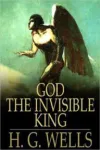
God the Invisible King is a theological tract published by H.G. Wells in 1917.

Certain Personal Matters is an 1897 collection of essays selected by H. G. Wells from among the many short essays and ephemeral pieces he had written since 1893. The book consists of thirty-nine pieces ranging from about eight hundred to two thousand words in length. A one-shilling reprint (two shillings in cloth) was issued in 1901 by T. Fisher Unwin. The essays in Certain Personal Matters are written from a consistent first-person perspective, but only one (ironically, given the title) describes an identifiable event in Wells's life—how he responded to being diagnosed with tuberculosis in the fall of 1887.

With Anticipations of the Reaction of Mechanical and Scientific Progress upon Human Life and Thought, generally known as Anticipations, H.G. Wells at the age of 34 staked his claim to the role of social prophet. He later called the book, which became a bestseller, "the keystone to the main arch of my work." His most recent biographer, however, calls the volume "both the starting point and the lowest point in Wells's career as a social thinker."

An Englishman Looks at the World is a 1914 essay collection by H. G. Wells containing journalistic pieces written between 1909 and 1914. The book consists of twenty-six pieces ranging from five to sixty-two pages in length. An American edition was published the same year by Harper and Brothers under the title Social Forces in England and America.

A Modern Utopia is a 1905 novel by H. G. Wells. The novel is best known for its notion that a voluntary order of nobility known as the Samurai could effectively rule a "kinetic and not static" world state so as to solve "the problem of combining progress with political stability."

The Sleeper Awakes (1910) is a dystopian science fiction novel by H. G. Wells about a man who sleeps for two hundred and three years, waking up in a completely transformed London, where, because of compound interest on his bank accounts, he has become the richest man in the world. The main character awakes to see his dreams realised, and the future revealed to him in all its horrors and malformities. The novel is a rewritten version of When the Sleeper Wakes, a story by Wells that was serialised between 1898 and 1899.
Tono-Bungay is a realist semiautobiographical novel written by H. G. Wells and published in 1909. It has been called "arguably his most artistic book".
The World Set Free is a novel written in 1913 and published in 1914 by H. G. Wells. The book is based on a prediction of nuclear weapons of a more destructive and uncontrollable sort than the world has yet seen. It had appeared first in serialised form with a different ending as A Prophetic Trilogy, consisting of three books: A Trap to Catch the Sun, The Last War in the World and The World Set Free.
The Wheels of Chance is an early comic novel by H. G. Wells about an August 1895 cycling holiday, somewhat in the style of Three Men in a Boat. In 1922 it was adapted into a silent film The Wheels of Chance directed by Harold M. Shaw.
The War of the Worlds is a science fiction novel by English author H. G. Wells. It first appeared in serialized form in 1897, published simultaneously in Pearson's Magazine in the UK and Cosmopolitan magazine in the US. The first appearance in book form was published by William Heinemann of London in 1898. It is the first-person narrative of an unnamed protagonist in Surrey and that of his younger brother in London as Earth is invaded by Martians. Written between 1895 and 1897, it is one of the earliest stories that detail a conflict between mankind and an extraterrestrial race. The novel is one of the most commented-on works in the science fiction canon.
The War in the Air, a military science fiction novel by H. G. Wells, written in four months in 1907 and serialised and published in 1908 in The Pall Mall Magazine, is like many of Wells's works notable for its prophetic ideas, images, and concepts—in this case, the use of the aircraft for the purpose of warfare and the coming of World War I. The novel's hero is Bert Smallways, a "forward-thinking young man" and a "kind of bicycle engineer of the let's-'ave-a-look-at-it and enamel-chipping variety."
The Time Machine is a science fiction novella by H. G. Wells, published in 1895. Wells is generally credited with the popularization of the concept of time travel by using a vehicle that allows an operator to travel purposefully and selectively. The term "time machine", coined by Wells, is now almost universally used to refer to such a vehicle. The Time Machine has since been adapted into two feature films of the same name, as well as two television versions, and a large number of comic book adaptations. It has also indirectly inspired many more works of fiction in many media.

The Soul of a Bishop tells the story of a spiritual crisis that leads Edward Scrope, Lord Bishop of Princhester, to give up his diocese in England's industrial heartland and leave the Anglican Church. A 1917 novel by H. G. Wells.
Richard Hardy, a member of the British gentry, tries to resolve problems in his marriage as he travels with a psychiatrist. Novel by H. G. Wells.
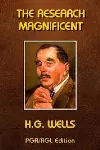
The Research Magnificent is a 1915 novel by H. G. Wells.

A 1911 novel by H. G. Wells that was serialized in The English Review in 1910. Because its plot notoriously derived from Wells's affair with Amber Reeves and satirized Beatrice and Sidney Webb, it was "the literary scandal of its day."

An 1896 science fiction novel by H. G. Wells, who called it "an exercise in youthful blasphemy". The text of the novel is the narration of Edward Prendick, a shipwrecked man rescued by a passing boat who is left on the island home of Doctor Moreau, who creates human-like hybrid beings from animals via vivisection. The novel deals with a number of philosophical themes, including pain and cruelty, moral responsibility, human identity, and human interference with nature. At the time of the novel's publication in 1896, there was growing discussion in Europe regarding degeneration and animal vivisection. Several interest groups were formed to oppose vivisection, the two largest being the National Anti-Vivisection Society in 1875 and the British Union for the Abolition of Vivisection in 1898.

The Invisible Man is a science fiction novella by H. G. Wells published in 1897. Originally serialized in Pearson's Weekly in 1897, it was published as a novel the same year. The Invisible Man of the title is Griffin, a scientist who has devoted himself to research into optics and invents a way to change a body's refractive index to that of air so that it absorbs and reflects no light and thus becomes invisible. He successfully carries out this procedure on himself, but fails in his attempt to reverse the procedure.
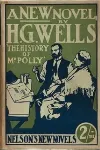
The History of Mr. Polly is a 1910 comic novel by H. G. Wells.
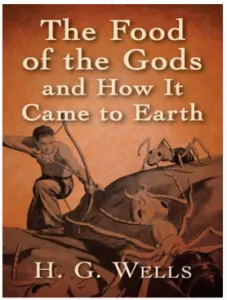
A science fiction novel by H. G. Wells, first published in 1904. Wells called it "a fantasia on the change of scale in human affairs. . . . I had hit upon [the idea] while working out the possibilities of the near future in a book of speculations called Anticipations (1901)." The novel is one of his lesser known works. There have been various B-movie adaptations.

The First Men in the Moon is a scientific romance published in 1901 by the English author H. G. Wells, who called it one of his "fantastic stories". The novel tells the story of a journey to the moon undertaken by the two protagonists, a businessman narrator, Mr. Bedford, and an eccentric scientist, Mr. Cavor. Bedford and Cavor discover that the moon is inhabited by a sophisticated extraterrestrial civilization of insect-like creatures they call "Selenites".

Science fiction novel by H. G. Wells
 Featured
FeaturedScience fiction novel by H. G. Wells
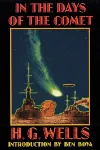
In the Days of the Comet (1906) is a science fiction novel by H. G. Wells in which humanity is "exalted" when a comet causes "the nitrogen of the air, the old azote," to "change out of itself" and become "a respirable gas, differing indeed from oxygen, but helping and sustaining its action, a bath of strength and healing for nerve and brain." The result: "The great Change has come for evermore, happiness and beauty are our atmosphere, there is peace on earth and good will to all men."

Ann Veronica is a New Woman novel by H.G. Wells published in 1909. Ann Veronica describes the rebellion of Ann Veronica Stanley, "a young lady of nearly two-and-twenty," against her middle-class father's stern patriarchal rule. The novel dramatizes the contemporary problem of the New Woman. It is set in Victorian era London and environs, except for an Alpine excursion. Ann Veronica offers vignettes of the Women's suffrage movement in Great Britain and features a chapter inspired by the 1908 attempt of suffragettes to storm Parliament.